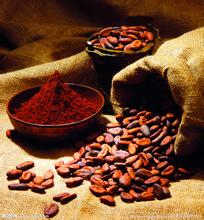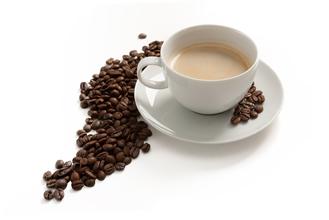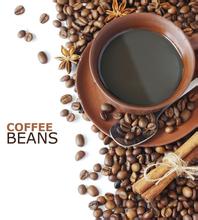Peruvian Coffee Flavor and Taste introduction to boutique coffee beans in manor area
It is called Congress, a unicameral system, made up of 130 members. Members shall be elected for a term of five years.
Peruvian presidential palace
Peruvian presidential palace
Re-elected. Congress has two sessions a year, and the standing Committee presides over the work during the recess. Each Congress has a term of five years. The current Congress was established in July 2011. The current President of Congress, Victor Isla Rojas (Victor ISLA Rojas), took office on July 26, 2012 for an one-year term. Distribution of seats in Congress: 43 seats in the Peruvian Victory Alliance, 36 seats in the 2011 Forces Party, 15 seats in the Peruvian feasible Alliance, 12 seats in the Great change Alliance, 8 seats in the National Unity Alliance, 6 seats in the Congressional Consultative Union (Apra Party, etc.), 10 seats in the people's Action-wide Front Alliance, the National Procuratorate is an independent body, and the Procurator General is elected by the Supreme Procuratorate for a term of 3 years, which can be re-elected once. However, the second term of office shall not exceed 2 years. The current national attorney general, Jose Antonio Antonio PELAEZ. The Audit Office is an independent body, and the Director of Audit is nominated by the Government and appointed by Congress for a term of seven years. The current national audit director, Fuad el í as KHOURY, the Peruvian Nationalist Party (Partido Nacionalista Peruano): the emerging left-wing party. Founded by Oyanta Humala in 2005. It has a high support rate in poor areas and urban vulnerable groups. Oppose the development model of neo-liberalism and advocate giving full play to the appropriate role of state intervention in the economy and restoring state control over resources, but not nationalization. Advocate social justice and establish a social security system for all citizens. Promote unity and integration of Latin American countries. President Humala, chairman of the party
Peruvian coffee cultivation history is not long, but as a rising star, Peruvian coffee is gradually opening up its popularity and entering the international market.
Peru is located in western South America, with a coastline of 2254 kilometers. The Andes runs from north to south, and the mountains account for 1% of the country's area. it belongs to the tropical desert region with a dry and mild climate. Peruvian coffee is mostly grown at the foot of the Andes, where it is rich in traditional Central American top coffee beans.
Peruvian coffee beans are best known for their coffee beans from Chimacha Mayou in the middle and Cusco in the south. In addition, some areas in northern Peru also produce characteristic organic coffee. Organic coffee is made of beans grown in the shade of trees. Although the yield of coffee beans is not high because of the method of planting in the shade, its quality can reach the level of gourmet coffee. This is because shading trees can slow down the ripening of coffee trees, help coffee grow fully, make it contain more natural ingredients, breed better flavors, and reduce caffeine content.
"how about Peruvian coffee beans and Peruvian organic coffee? Introduction to Peruvian Coffee w.kaf.name
Peruvian coffee is grown in a planned way, which has greatly increased coffee production. Peruvian coffee has a mellow taste and proper acidity, and this lukewarm coffee attitude has made more and more people like it. Peruvian coffee has always been used as one of the stable mellow mixed beans of comprehensive coffee, and its rich acidity and mellow smoothness are its most prominent features. Peruvian coffee has a soft sour taste, medium texture, good taste and aroma, and is an indispensable ingredient in the production of comprehensive coffee. High-quality Peruvian coffee, with strong aroma, smooth, layered, rich sweet, elegant and mild sour taste, will quietly awaken your taste buds.
Peru
Peru is also a big coffee producer. Up to 98% of Peruvian coffee is grown in forest areas, and most producers are small farmers. Coffee is high-quality and balanced and can be used for mixed drinks.
Peru has good economic conditions and a stable political situation, thus ensuring the good quality of coffee. In the mid-1970s, Peruvian coffee production was about 900000 bags a year, and then steadily increased to about 1.3 million bags a year. Although private exporters buy coffee in remote areas through middlemen, the main market is still monopolized by the government. Later, the private Comera de Exportadores de Cafe del Peru was established, which is committed to improving the quality of coffee. Its primary task is to set standards and eliminate inferior products, so as to create an atmosphere of quality supremacy. This positive move heralds a bright future for the coffee industry. Since then, rising prices have encouraged farmers to actively grow coffee rather than cocoa, the region's traditional cash crop.
Peru's finest coffee is produced in Chaximayo, Cusco, Note and Puno. Most Peruvian coffee is grown under natural conditions, but it is also difficult to confirm the cultivation of all coffee trees. Coffee grown under natural conditions costs 10% more than others and is exported to the United States and Japan.
The quality of Peruvian coffee is comparable to that of any kind of coffee in Central or South America. Apart from some of the high-quality coffee produced in Peru, in addition to producing instant coffee, most of the high-quality coffee produced in Peru is shipped to Germany to process mixed coffee and then to Japan and the United States, which also illustrates its high standard of quality.

Important Notice :
前街咖啡 FrontStreet Coffee has moved to new addredd:
FrontStreet Coffee Address: 315,Donghua East Road,GuangZhou
Tel:020 38364473
- Prev

Civet Coffee Flavor Taste Variety Production Characteristics Fine Coffee Bean Introduction
The coffee comes from the droppings of an animal called a civet (commonly known as a civet in Indonesia). Although it comes from smelly poop, it tastes sweet and has an indescribable sweetness. This wild civet likes to eat fat and thick coffee fruit, but the hard fruit core (raw beans) cannot be digested and excreted with feces. After washing, it becomes Kop.
- Next

Introduction to the characteristics of Musk Coffee Flavor and Taste varieties in producing areas
The cultivation of coffee is regulated by the state, and the best coffee growing area in Cuba is located in the Central Mountains. Because this area not only grows coffee, but also produces quartz, crystal and other precious minerals, it is also known as Crystal Mountain. At present, Crystal Mountain Coffee is synonymous with top Cuban coffee. Crystal Mountain is adjacent to the Blue Mountains of Jamaica, with similar climatic conditions, but
Related
- Detailed explanation of Jadeite planting Land in Panamanian Jadeite Manor introduction to the grading system of Jadeite competitive bidding, Red bid, Green bid and Rose Summer
- Story of Coffee planting in Brenka region of Costa Rica Stonehenge Manor anaerobic heavy honey treatment of flavor mouth
- What's on the barrel of Blue Mountain Coffee beans?
- Can American coffee also pull flowers? How to use hot American style to pull out a good-looking pattern?
- Can you make a cold extract with coffee beans? What is the right proportion for cold-extracted coffee formula?
- Indonesian PWN Gold Mandrine Coffee Origin Features Flavor How to Chong? Mandolin coffee is American.
- A brief introduction to the flavor characteristics of Brazilian yellow bourbon coffee beans
- What is the effect of different water quality on the flavor of cold-extracted coffee? What kind of water is best for brewing coffee?
- Why do you think of Rose Summer whenever you mention Panamanian coffee?
- Introduction to the characteristics of authentic blue mountain coffee bean producing areas? What is the CIB Coffee Authority in Jamaica?

